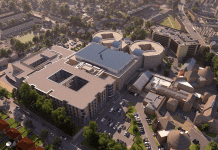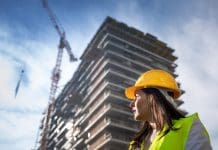New guidance for structural engineers from the Institution of Structural Engineers challenges the commonly-held belief that inclusive design is more expensive than it is worth
New inclusive design guidance from Institution of Structural Engineers (IStructE) has outlined the multiple benefits that can be gained from embracing inclusive design in the built environment.
Inclusive design for structural engineers contains insight from various industry experts in engineering and design specialisms.
Sectors that could benefit from incorporating inclusive design include residential buildings, the landscape and public spaces, stadia, and historic buildings.
Inclusive design considers the user’s needs and experiences
Focusing on the direct and indirect impacts of design decisions on users ensures a place or building is safe, comfortable, enjoyable, and equitable to use.
Tanya de Hoog, incoming president of IStructE, has written a section with Jennifer Carpenter of Verona Carpenter Architects about designing for neuro-inclusion.
Tanya says: “Our sensory response to the built environment is determined by how our brains process sensory inputs from that space. This is different for everyone. So, it’s important for structural engineers, architects, and designers to have an awareness, and understand the opportunities for making buildings welcoming to the broadest diversity of brain function.”
Broadened appeal brings economic opportunities
Ed Warner, founder and CEO of Motionspot, the inclusive design consultancy, writes the foreword to the publication, and says: “Considered from the outset, inclusive design can provide a positive return on investment through increased footfall and revenue for businesses along with the ability to recruit and retain employees from a broad and more diverse talent pool.
“If we are to build a world where everyone feels safe, welcome, and valued, inclusive design should be at the heart of all stages of design and be the responsibility of all built environment professionals. Inclusive design does not have to add significant cost to a project.”
Incorporating inclusive design creates long-term economic value, as the space is not only accessible but attractive to users- and ensures that an asset can be easily repurposed.
The report advocates for ealier decision making, arguing that retrofitting inclusive design often ends up as an ‘unsatisfactory compromise on several fronts’ economically.
As Ed Warner goes on to say, structural engineers are uniquely positioned in the built environment to deliver inclusive design guidance: “Engineers are one of the first specialist consultants involved in a building project and if they can make inclusive design considerations from the start and offer healthy challenge to the wider design team at each stage of design and construction, this will help create buildings and spaces that are inclusive, welcoming, and equitable for everyone.”

















